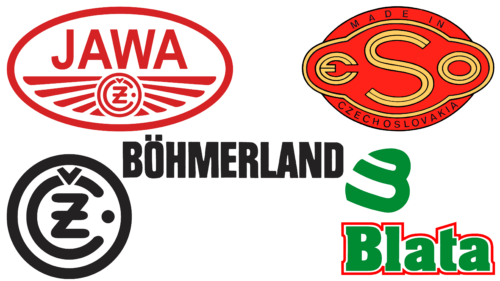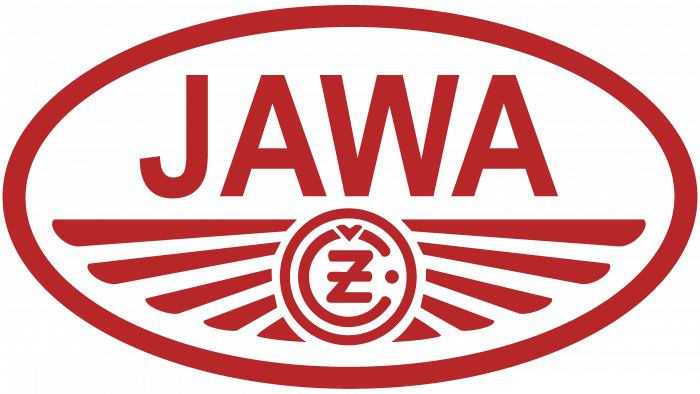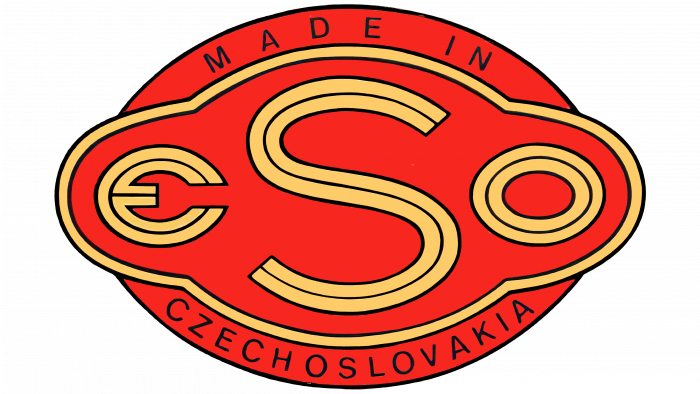The pre-war Czech motorcycle industry competed successfully with other world manufacturers. It is characterized by a rather smaller number of companies that chose motorcycles as their focus than Great Britain or Germany. Still, it was the first Slavic country to start such production. In the pre-war period, its machinery successfully competed with the leading German manufacturers. After the war, when pre-war European brands began to experience great problems, the Czech company, which produced Jawa, retained a leading position in Europe for a long time and was in demand in the United States, Canada, and India.
What are Czech motorcycle brands?
The Czech motorcycle industry is underdeveloped, but before the war, it was competitive in the international market. Now, it is represented by a limited number of brands, the best known of which are Jawa, Blata, CZ, ESO, and Böhmerland.
However, the emergence of new, more successful global brands offering simple and cheap products, which was especially relevant during the post-war devastation, did not favor companies whose products continued to be based on improving once-popular motorcycle models. Japanese manufacturers, who had conquered the world market, played a destructive role in this direction. This affected the Czech motorcycle industry, which failed to compete with the new products; because of this, production in the country was forced to give way to foreign companies.
Jawa
The company’s founder in 1929 was František Janeczek, whose factory was originally engaged in producing weapons. His first motorcycle was a licensed unit of the German manufacturer Wanderer. Combining the owner’s surname and the German company created an abbreviation that became the name of the model range of Czech motorcycles – Jawa and the country’s leading brand popular in the twentieth century. But in 1937, the company had already released its model – the 100-cubic-inch Jawa-Robot, developed by the then-young designer Josef Josef. Just two years later, just before the war, the factory produced a historic model for him, which became the prototype for all post-war motorcycles of the company that brought it world fame. In 2017, the legendary brand got a second life. The Indian Mahindra bought out the rights to its production.
The brand’s emblem has not changed for almost all its existence. Its red color, characteristic of all motorcycle models of this brand, is well known to amateurs and professional motorcyclists. The inner space of the emblem oval is visually divided in half. The brand’s name occupies the upper half – Jawa, and the lower half – is a stylized image of wings and wheels in the center, from which they emerge. Everything is simple and laconic, but the main thing is very memorable. Speed, movement – everything is in one common rhythm.
Blata
One of the relatively young and still active motorcycle brands in the Czech Republic is Blata. The company, founded by Pavel Blata in 1990, immediately found a popular niche – the production of pocket rockets, or pocket bikes, with a small weight of up to 30 kg, on which are attached power units with a volume of 40 cm3, as well as electric mini-scooters with a capacity of 1, 4 kW. The company is located in the Czech town of Blansko, where it also develops its engines using modern CAD-CAM technology.
The company has chosen a traditional solution for its emblem – the company name and a stylized letter “B” without a connecting line, in a shape reminiscent of a bicycle fairing. The design is bright green. At the same time, the text of the emblem, executed in Aachen SH Bold font, is highlighted by a frame of bright fluorescent red color.
CZ
One of the oldest motorcycle brands in the Czech Republic is CZ, based on the Ceska Zbrojovka arms factory, which began operations as early as 1919 in Svatopluka Čech, 1283 Uherský Brod. In 1930, Ceset reoriented itself to the creation of vehicles and, in the same year, produced several motorcycles, the engine of which was placed on the front wheel. However, the practicality of this design proved to be very poor, leading to the development and release of a new model two years later. Throughout the pre-war period, CZ released a new design model every two years. But the war made its adjustments. After its end, the brand became an integral part of Jawa.
All company products were marked with an emblem, which has not undergone any changes. The emblem was the abbreviation CZ, enclosed in a circle. The letter “C” repeated the shape of the outer circle but with an incomplete right part of the sector, in which there was a dot. In its central part was the sign “z” – the Czech alphabet, whose flag at the top shared the lettering of the “C.” The entire free field of the emblem inside the circle was made in a light titanium shade of color, which provided visual “illumination” of the contours of the metalized circle and the elements of the abbreviation.
ESO
The famous Czech motorcycle racer Jaroslav Simandl 1949 founded his own company to produce racing motorcycles ESO. The reason for this decision was dissatisfaction with the offers of world manufacturers of motorcycles for speedway, motocross, and ice racing. It focused on developing models for these sports and the company’s activities. Having existed until 1964 as an independent brand, it, together with all its facilities, was bought by Jawa, which continued the ESO sports line in the Czech town of Divisov but was already under its brand.
Simandl labeled his motorcycles with an emblem that he developed with his son. An element resembling the cap of the filler neck of the fuel tank was applied to the oval, which was made in a dark shade of red in its outline. It bore the brand’s abbreviation, with the first and last letters smaller than the middle. Each letter was separated in the middle by a black line repeating its outline. The letters and the outline of the “cap” were executed in bronze to provide an attractive and comfortable visual appeal. Around this symbol, repeating the contours of the oval in the background, the text was printed in black – “MADE IN” at the top and “Czechoslovakia” at the bottom – which indicated that the owner belonged to his state, which at that time was Czechoslovakia.
Böhmerland
One of the motorcycle manufacturing brands in the Czech Republic (at the time of its existence – Czechoslovakia) was Böhmerland, which existed for only 17 years. Founded by the talented Czech designer Albin Hugo Liebisch in 1922, the brand was distinguished by models with a long wheelbase, reaching 10.5 feet. The prototype appeared in 1922 with the support of Alfred Hille, head of Tatra. Assembly was done by hand, which added to the cost. The first five models were tested only three years later – in 1925 in Shenlinde. It was then that the brand “sounded” as Böhmerland, which translated as “Bohemia Country,” as the territory of the Czech Republic was historically called in ancient times. However, the brand’s models were not in wide demand, and in 1939 the company closed down.
Despite such a lofty name, the brand did not receive a consonant in beauty and uniqueness of the visual image. The emblem looked simple and laconic—only the brand name was in lowercase letters, which were applied to the surface of 3000 motorcycles produced by this brand.
FAQ
What motorcycles are made in Czechoslovakia?
The Czech Republic has a long history of motorcycle production, dating back to its time as part of the Austro-Hungarian Empire and continuing into the Czechoslovak era.
In the early 20th century, brands such as Achilles (1906-1910) were pioneers, creating some of the first motorcycles in the region. Despite its short existence, CAS (1921-1924) made its mark with quality motorcycles. After World War II, Hourican (1945–1949) helped revive the Czech motorcycle industry.
In the mid-20th century, Eisler (1920-1926) and ERA Sidecars (circa 1932-1939) demonstrated Czech craftsmanship in producing motorcycles and sidecars, which were very popular then. The Druzheta Stroller Company (1958–1959) specialized in producing strollers and catered to those looking for versatile vehicles.
The period from 1948 to 1999 was the heyday of Czech motorcycles. ESO, which later changed its name to ACE in 1948, originally focused on racing motorcycles and became known for its high-performance models. Babetta, operating from 1970 to 1999, was famous for its mopeds, offering affordable and reliable options in Eastern Europe.
Brands such as Aero Sidecars (1920s), GH (1924-25), and Grizzly (1925-1932) used unique designs and addressed specific consumer needs.
Many historic brands no longer exist, but motorcycle enthusiasts and collectors worldwide still feel their influence.
What country is Jawa motorcycle from?
Jawa motorcycles are made in the Czech Republic. The main company, Jawa Moto, is located in Prague. This brand is well-known in the Czech automotive industry due to its long history and traditional design.
Jawa operates under license in India, manufacturing and marketing motorcycles specifically for the Indian market. This partnership helps the brand reach more customers while maintaining its legacy in one of the largest motorcycle markets in the world.
Do they still make Jawa motorcycles?
Yes, Jawa motorcycles are still produced today. The brand operates in the Czech Republic and India and has recently introduced new models.
In the Czech Republic, the company creates motorcycles that combine traditional looks with modern technology. The enterprise is active in India and has launched several new models suitable for the local market. These new motorcycles have revitalized the brand and helped it grow in one of the world’s largest motorcycle markets.
Is Jawa successful?
Jawa used to be a leading motorcycle brand known for its rugged and stylish motorcycles. Over time, it faced difficulties and lost popularity. Recently, new owners have been working to return the brand to its former success.
They repositioned Jawa as a retro motorcycle brand, responding to the growing interest in vintage-style motorcycles. They moved production to India, benefiting from lower costs and access to one of the largest motorcycle markets in the world.
These efforts to rejuvenate the brand are yielding positive results. The company has introduced new models that combine traditional styles with modern technology.








